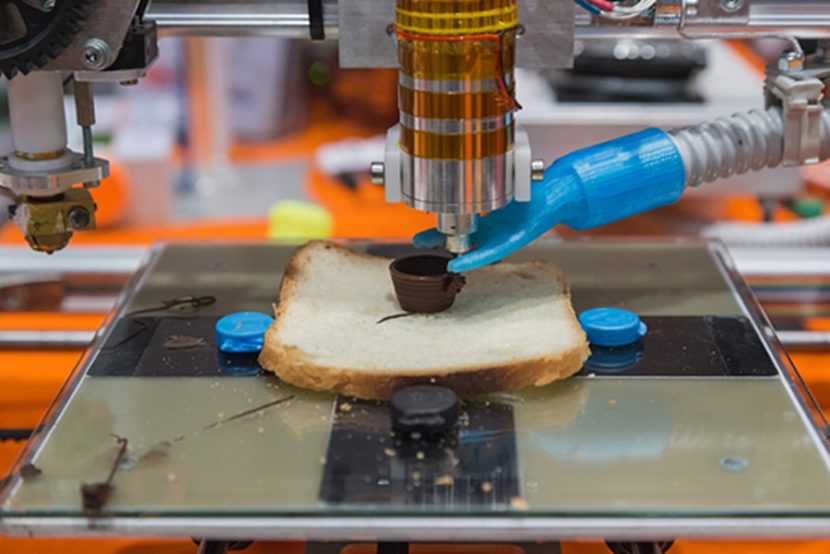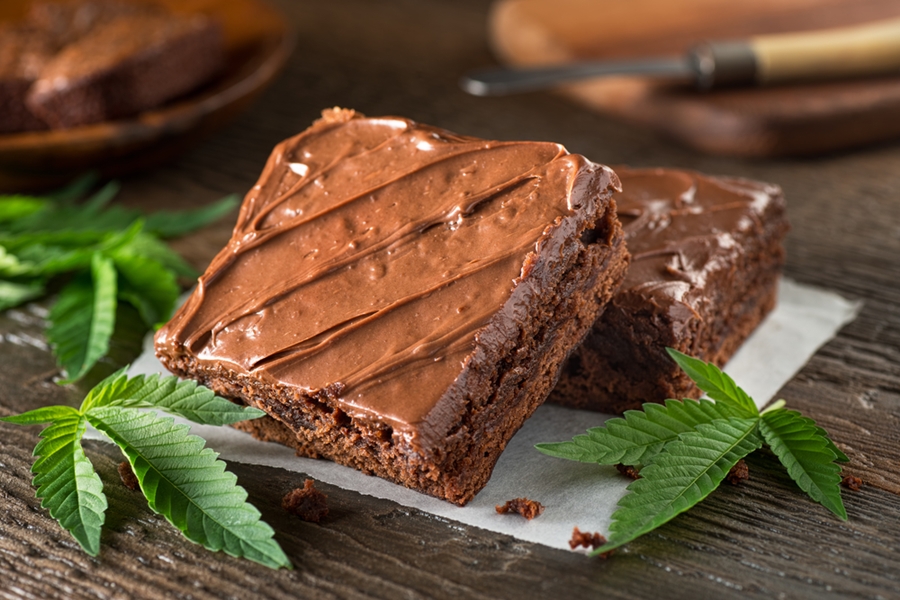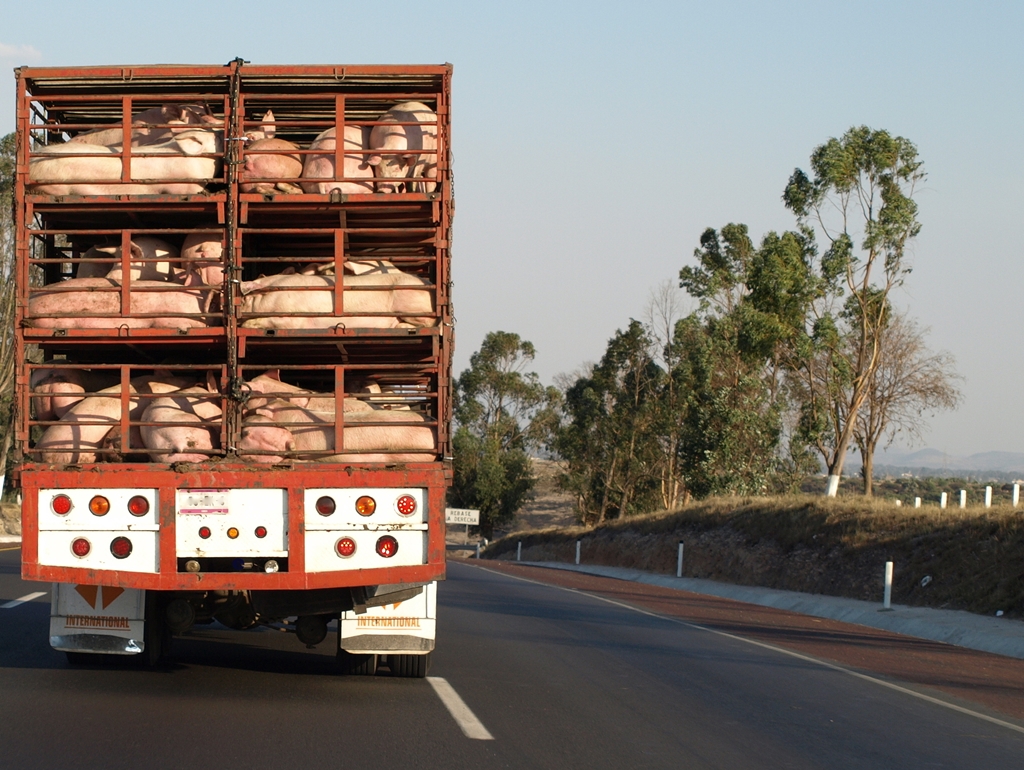3D and Lab-Grown Foods Gaining Ground on More Traditional Fare. But Are They Safe?
By Jaan Koel
Because of the unique food safety and other benefits it provides, 3D food printing is revolutionizing food production, and sales are expected to grow to USD $425 million by 2025, up 55% over 2018’s tally.
The technology is currently being used to create chocolate and bakery products, such as puddings, custards, and purées, but banana and carrot concoctions are also possible. The process involves reducing food to a mush, then forcing it through a series of brass or stainless-steel nozzles that pass back and forth over a surface—like the head of an inkjet printer does—in response to a computer program. Ultra-thin layers of material are traced on top of each other, to build the food from the bottom up.
The process has a number of advantages over traditional food processing techniques, including the ability to:
• formulate new and unusual food shapes and sizes
• deliver personalized nutrition and
• create customized textures
It’s also being developed for new protein-rich foods such as algae, beet leaves, and even insects.
We have been working on 3D food printing for about seven years now and feel that the various processes are indeed safe.
But Is 3D Food Printing Safe?
Food safety for 3D food printing revolves around the food itself, the printer, and the food container. The printer creates the container first, either out of Polylactic Acid (PLA) or Acrylonitrile Butaden Styrene (ABS), and then prints and fills the food that goes inside. The walls must be as smooth as possible to prevent crannies where bacteria might hide and grow, and so many printers coat containers with a thin layer of protective epoxy before filling them.
Clean machines are also critical, and care must be taken to minimize any possibility of bacteria build-up, especially in the nozzles. TNO of The Hague, Netherlands, is a leading applied and contract research firm that specializes in 3D food printing, among other things. Says senior consultant Kjeld van Bommel: “We have been working on 3D food printing for about seven years now and feel that the various processes are indeed safe.”
Demonstrating its confidence in the safety of 3D printing, the Food Science Department at the University of Copenhagen is participating in a new research collaboration aiming to use the process to tailor meals for individual hospital patients.
“Many hospital patients are immune-compromised and as such are particularly vulnerable to infections,” says the department’s professor and specialist in food safety Susanne Knøchel. “Microbiological safety will therefore be an integrated part of the project dealing with the main challenges and requirements for the equipment, processes, and products.”
The department’s professor of dairy process technology Lilia Ahrné says along with food safety in hospitals, tailored meals are of great importance. “…Each patient needs a particular diet… (designed around) his or her disease and nutritional requirements, (and) adapted to their taste preferences,” she adds.
Food Safety and Lab-Grown Meat
Other novel technologies gaining ground today include plant-based and lab-grown meats. The latter is grown from cell cultures instead of through animal reproduction. According to some experts, like Food and Agritech Specialist Dr. Rosie Bosworth, plant-based alternatives can be designed to be nutritionally superior to, and safer than, traditional meat. That’s because they contain higher vitamin, mineral and protein levels without the added hormones, antibiotics, high fat content and cholesterol associated with animal meat.
What’s more, raising animals for food requires huge amounts of food, energy, water, and land for grazing and feed. Alternative meat production is dramatically less demanding of these resources and the laboratory conditions under which they are developed make it easier to manage safety issues. For instance, Impossible Foods of Redwood City, CA, says its plant-based burger uses 95 per cent less land, 74 per cent less water, and generates 87 per cent less greenhouse gas emissions than a burger made from a cow.
Who knows what other options will develop as technology advances. But additional regulatory control cannot be far behind.
About the Author
Jaan Koel is a respected food safety writer with a substantial portfolio developed over many years of front line writing experience. He began contributing to GFSR six years ago and is a regular contributor to other industry leading business-to-business publications. Aside from his expertise in the area of article writing, he has developed a strong credibility writing in the areas of corporate communications, public relations, government communications and marketing.

-
 FeaturedRisk management
The Cost of a Breach: What a Cyberattack Could Mean for Food Safety Recalls
FeaturedRisk management
The Cost of a Breach: What a Cyberattack Could Mean for Food Safety Recalls
-
 FeaturedRisk management
Securing the Food Chain: How ISO/IEC 27001 Strengthens Cybersecurity
FeaturedRisk management
Securing the Food Chain: How ISO/IEC 27001 Strengthens Cybersecurity
-
 FeaturedRisk management
Revolutionizing Food Safety Training: Breaking Out of the “Check-the-Box” Mentality
FeaturedRisk management
Revolutionizing Food Safety Training: Breaking Out of the “Check-the-Box” Mentality
-
 GFSI Standards
GFSI 2025: Building Trust, Tech-Forward Solutions, and Global Unity in Food Safety
GFSI Standards
GFSI 2025: Building Trust, Tech-Forward Solutions, and Global Unity in Food Safety
-
 FeaturedFood Safety
Integrated Pest Management: Strategies to Protect Your Brand’s Reputation
FeaturedFood Safety
Integrated Pest Management: Strategies to Protect Your Brand’s Reputation
-
 FeaturedFood Safety Culture & Training
No Open Door Policy: Challenges That Impact Pest Control in Food Processing Plants
FeaturedFood Safety Culture & Training
No Open Door Policy: Challenges That Impact Pest Control in Food Processing Plants




